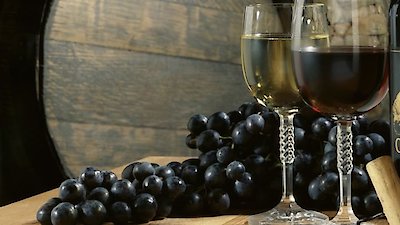
Foundations of Organic Chemistry Season 1 Episode 16 Organic Acids and Esters
- TV-PG
- September 26, 2014
- 34 min
Organic Acids and Esters is the sixteenth episode of season one of the Foundations of Organic Chemistry show. In this episode, the focus is on organic acids and esters, which are essential organic compounds in industry, biology, and daily life.
The episode begins with an overview of organic acids, which are compounds containing a carboxyl group (-COOH). The host discusses the properties and nomenclature of carboxylic acids, as well as their relevance in organic synthesis and biological systems. The audience learns that carboxylic acids are weak acids due to the stability of carboxylate anion formed upon dissociation. The host demonstrates how to name a carboxylic acid using the IUPAC rules and gives examples of common carboxylic acids, such as acetic acid, butyric acid, and benzoic acid.
The second part of the episode is devoted to esters, which are derived from the reaction between a carboxylic acid and an alcohol. The host explains the structure and naming of esters and their importance in flavor and fragrance industries. The audience learns that esters are responsible for the sweet fruity smell of many fruits, such as apples, bananas, and pineapples, as well as artificial flavors and fragrances. The host demonstrates how to name an ester according to the IUPAC rules and provides examples of common esters, such as ethyl acetate, isopentyl acetate, and methyl salicylate.
The third part of the episode focuses on the formation and reactions of esters. The host explains how to synthesize an ester using a carboxylic acid and an alcohol in the presence of a catalyst, such as concentrated sulfuric acid. The audience learns that esterification is a type of condensation reaction that results in the formation of an ester and water. The host then discusses the hydrolysis of esters, which is the reverse reaction of esterification, and the conditions that favor it. The audience learns that ester hydrolysis can be acid-catalyzed or base-catalyzed and that it results in the formation of a carboxylic acid and an alcohol.
The fourth and final part of the episode explores the uses of organic acids and esters in daily life and industry. The host gives examples of how carboxylic acids are used in the production of soaps, detergents, and textiles. The audience learns that fatty acids are essential components of lipids and that they are used in the production of compounds such as oleic acid, stearic acid, and palmitic acid. The host then discusses the uses of esters in the production of flavors, fragrances, and solvents. The audience learns that esters are used in the production of artificial flavorings such as artificial banana, strawberry, and peach. The host concludes the episode by emphasizing the importance of organic acids and esters in the chemical industry and their relevance in everyday life.
Overall, Organic Acids and Esters is an informative and engaging episode of Foundations of Organic Chemistry that provides a comprehensive overview of the structure, synthesis, and uses of carboxylic acids and esters. The episode caters to a wide audience, including students, chemists, and anyone interested in learning more about organic chemistry. It highlights the importance of organic acids and esters in industry, biology, and everyday life and demonstrates their fascinating chemistry.
